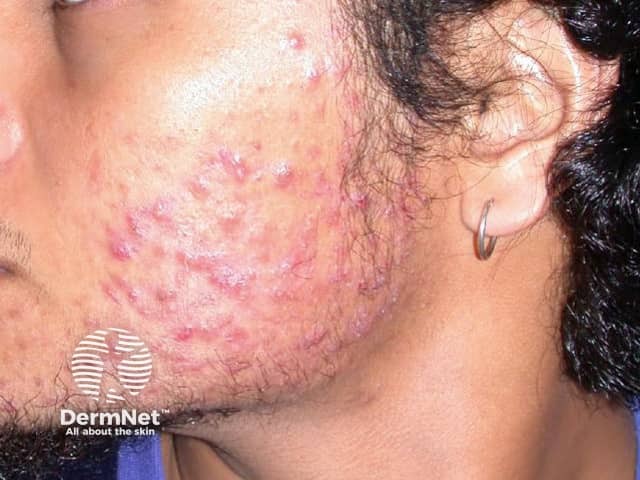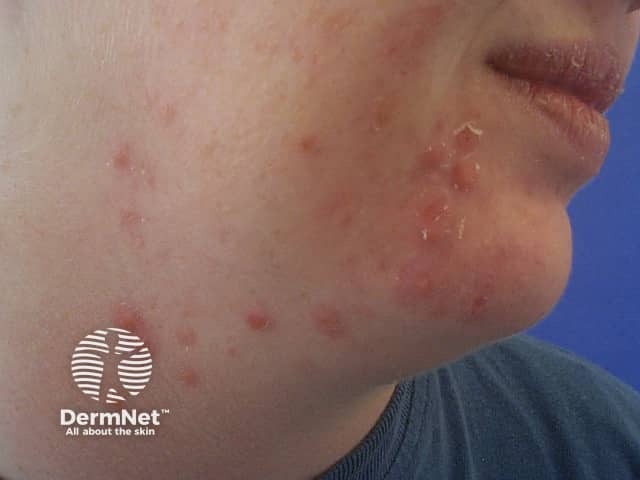Main menu
Common skin conditions

NEWS
Join DermNet PRO
Read more
Quick links
Author: Reviewed and updated by Dr Amanda Oakley Dermatologist, Hamilton, New Zealand; Vanessa Ngan, Staff Writer; and Clare Morrison, Copy Editor, June 2014.
Introduction What sebum does Hormonal control Variation with age
Sebum is a complex and variable mixture of lipids including:
Sebum is produced by sebaceous glands when they disintegrate. The gland cells last about a week, from formation to discharge. The sebaceous glands produce lipids, triglycerides, which are broken down by bacterial enzymes (lipases) in the sebaceous duct to form smaller compounds, free fatty acids. The oil on the surface of skin is a complex mixture of sebum, lipids (from the surface skin cells), sweat and environmental material.

Acne affecting the back images

Facial acne

Facial acne
Sebaceous glands are found over most of the body, although there are few on the hands and feet and none on the palms and soles. Sebaceous glands on the mid-back, forehead and chin are larger and more numerous than elsewhere (up to 400–900 glands per square centimetre). They are also numerous in the ear canal and around the genitals.
The sebaceous gland consists of lobes connected by ducts, which are lined with cells similar to those on the skin surface. Most sebaceous glands open out into the hair follicle. Some free sebaceous glands open directly onto the skin surface. These include Meibomian glands on the eyelids, Tyson glands on the foreskin and Fordyce spots on the upper lip and genitals.
Sebum has the following functions:
Sebum production is under the control of sex hormones (androgens). The most active androgens are testosterone, 5-testosterone (DHT) and 5-androstene-317diol. These hormones and others are made by the sex glands (ovary in females, testis in males) and by the adrenal gland. These glands are in turn under the influence of the pituitary gland, located in the brain.
Androgens are made more active by enzymes in the skin and sexual organs. Type 1 5α-reductase acts in the skin and Type II 5α-reductase acts in the sexual organs. These enzymes convert less active androgens into the active testosterone and 5-testosterone (DHT). These more active androgens stimulate sebaceous gland cells to produce more sebum.
The role of the hormone progesterone is unclear. Females produce more sebum in the week before their menstrual period when progesterone levels are higher. But progesterone is known to reduce the activity of the enzyme 5-reductase, which one might expect to reduce sebum production.
Sebaceous glands are already active before birth. They are regulated by the mother's hormones and those made by the fetus itself.
The composition of oils on the skin surface varies with age. Excessive sebum production is known as seborrhoea.
The amount of sebum can be altered by disease:
The amount of sebum can be reduced by certain systemic medications:
The amount can be increased by some other systemic medications:
The proportion of different components of sebum may change with certain medications: